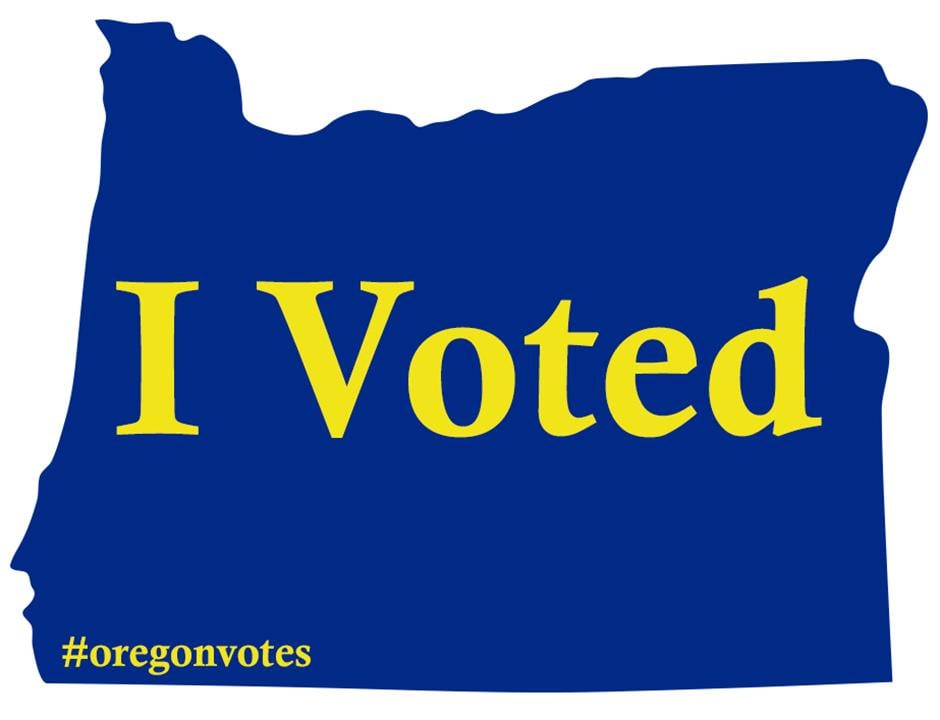I watch a lot of Dead Mall videos on YouTube and I wanted to see what everyone’s thoughts are on why there’s so many dead malls now.
Combinations. Amazon, smart phones, how kids hang out, poverty, giant stores like target and wal mart…It’s a bunch of reasons that all hit against malls.
Malls haven’t been the only hit over the decades. “Cruisin” is no longer a thing. Teens used to spend hours on nice nights driving up and down a certain stretch of road in nearly every city somewhere.
More kids used to ride bikes around for funnies.
Drive in movie theaters used to be huge.
Things always change and it’s almost never just a single reason.
Part of that is also how in our car-centric society, our public transportation sucks. And biking is unsafe in many places— even spots that have bike lanes. Everything is too far way, so you can only get there by car. Everywhere you that is close is either unsafe or actually impossible to bike to, unless you’re lucky. And if you wanna take the metro or bus, it’s slow af, unreliable, and in many places has very few stops and runs infrequently.
And then the lack of people using public transportation only leads to more cars on the road which makes the problem even worse! More lanes, more land used for parking lot deserts, etc.
Nowhere to go, no way to get there, nothing to do.
This is one of my things I go off about. People sometimes tell me they want to move out of the city “for their kids” and I’m like are you crazy? The suburbs were hell as a kid. Can’t go anywhere because you don’t have a car and walking is dangerous and slow. I was always so jealous of my friends that lived in the city. They could just go do stuff
“Cruisin” is no longer a thing. Teens used to spend hours on nice nights driving up and down a certain stretch of road in nearly every city somewhere.
Not only is this no longer a thing it’s actually explicitly illegal in some places. Passing the same location 4 times within a short period or “driving without a destination” can get you a ticket if the cops are paying attention.
That’s kinda fucked up. Almost sounds like laws targeting homeless people living out of their cars. And for anyone else, why shouldn’t I be able to just tour around and look at sights without necessarily stopping anywhere? That’s basically what I do every weekend for fun.
Yep. That’s the thing that never changes. “The man” is a total asshole killjoy.
“Cruisin” is no longer a thing
That’s not the case in much of the rural US. In small towns (~30-75k) everywhere there are kids driving up and down the road every Friday and Saturday night.
You’ll just have to trust me, or ask an old timer from one of those cities you speak of (I’m from one of several in the area). They’re about 1/4 the amount of traffic that they used to be.
It’s because they can’t remember where their meth dealer lives this week.
Malls were being killed by big box complexes before Amazon was prevalent, but the one-two punch didn’t do them any favors.
I see it as a combination of things…
Big box retailers.
Online sales.
People stopped going to movie theaters.So what’s the reason to go to a mall? Crappy food court food?
Paradoxically, I would still go to movies if they were willing to kick people out for using their phone once during the film. There’s only one theater in my area that’s strict like that.
Right, there’s got to be a good reason to go to the mall. The successful malls still draw crowds because they have more than just stores and a movie theater.
Successful malls have an Apple Store, Tesla, and Louis Vuitton, which tells us something about who can still afford to shop there.
So what’s the reason to go to a mall? Crappy food court food?
The last dozen or so times I’ve been to a mall, the only thing I’ve spent money on was food. It’s hard to justify spending money at the mall when I know I can get just about anything there from an online retailer for a lot cheaper. But I can’t get an Orange Julius online. Yet.
There’s a fuckin delicious Asian place in my local mall that has the best teriyaki chicken and fried rice I’ve ever had. That and Charley’s lemonade are a couple of the only reasons I go to my mall.
By charleys you mean the Philly cheesesteak place right? Love them, too bad there aren’t any near me
That’s the one. They also go by a different name in some other parts of the country, I think. I don’t remember what it is though.
There’s one about 45min away, just to far to justify, but maybe I’ll make it out there sometime
Out of curiosity; where are your grocery stores, pharmacies and post offices? Because here in Australia, most of them are in shopping centres (Aussie for ‘mall’). The vast majority of us go to do our weekly shop, grab medication, send back returns from our online shopping etc. so they’re still very much alive and well.
In America, there’s like 3 different things you could call a mall. When most people talk about them, it means a giant building with central indoor paths connecting a bunch of businesses. Typically, there would be a handful of “anchor” businesses, like department stores and a movie theater, and then space for a bunch of much smaller businesses in between including restaurants. These malls (at least the ones I’ve been to) for whatever reason don’t typically have grocery stores. I have seen pharmacies and small Dr’s offices in them.
Then there are “strip malls” that are typically a row of businesses on one side or surrounding a big parking lot. Typically grocery stores are in those.
Lastly, there’s “outlet malls”, which are often set up like a fake town with parking distributed throughout. They are commonly built on cheap land in the outskirts of towns, and they have mostly clothing. They are typically brand specific stores (e.g., Nike), so they are allegedly cheaper.
It’s that first category that Americans are going to be talking about if they just refer to a “mall”, though. The idea to have all your shops in a convenient place has been around forever, and still works great in many traditional business districts. The “shopping mall”, though, was somewhat of an artificial movement in the 80’s and 90’s that was always a bit destined to fail. Like people have said, the internet is partially responsible, but malls were hurting before the internet started really doing damage. In America, you basically have to drive everywhere, and if you are driving everywhere, it’s easiest to just drive directly to whatever shop you need. With malls, you have to park far out in a giant lot, and walk a long way to get to whatever business. You could call it lazy, but if you’ve only got a little bit of time after a day of work to do shopping, are you going to do the option where you get the task done in 30 minutes, or an hour?
Such an interesting perspective, thanks for your contribution! I guess our ‘shopping centres’ are essentially the first condition you’ve described that also have grocery stores attached, and it’s likely the grocery store (in Australia this basically means one of 3-4 companies) that are keeping these structures going in the modern age. Our shopping centres tend to be built ‘up’ rather than ‘out’, with 3-5 storey shopping centres (with up to 7 storey parking lots) being fairly common within city limits that are closely accessible to more than 50% of the population.
That being said though, I live fairly equidistant between two of the largest shopping centres in Sydney and still choose to go to my local, smaller, single-storey shopping centre which is very small by Australian standards (<40 stores) which feels much more like a ‘mall’.
Do you guys have a lot of standalone grocery stores that you can drive right up to, park, shop and leave? Because that’s definitely the minority here!
We definitely get most of our groceries from standalone grocery stores. For the most part, you drive right to it.
I just looked at some Sydney shopping centres, and they look much like our malls on the inside (except for groceries), but it seems like they are much more integrated in the neighborhoods. It looks like parking garages are more popular there than the giant lots here.
I just looked at the dead mall wikipedia page, and it has a picture of the century 3 mall. That’s a good example of what they look like here; separate from where people live, and surrounded by big lots. You can actually see the strip malls that replaced it all around it.
American malls are three categories. Generally when people say “the mall”, they mean big, indoor, enclosed malls. That’s what is dying a slow death.
A local example for me:
https://en.m.wikipedia.org/wiki/Clackamas_Town_Center

The problem has been the large anchor stores are going out of business and the stores that remain struggle to survive.
The kind of mall you describe, Americans call “strip malls” and are much smaller and open to the elements. A grocery store, maybe a bank, fast food, not an official post office, but a pack and ship location, sometimes a DMV. That kind of thing.
Strip malls also struggle, there’s one by my house where the big grocery store just closed leaving it maybe 50% vacant.
We also have stand alone grocery stores that aren’t part of strip malls that collect other small stores around it like mini-moons. Barbershops, laundromats, liquor stores.
As long as the grocery store operates, everyone does fine.
Edit Almost forgot… “Big Box Complexes”. Not really malls, just large block stores sharing a common parking lot. So like a Target, Home Depot, Best Buy, all stand alone stores with shared parking.
Take a Brazilian Lemonade recipe and sub in oranges. :) Make it at home.
Oohhh, that sounds delicious! My old boss at work was telling me about Brazilian lemonades a while back and I’ve been meaning to try it at some point.
Apparently there’s a recipe on that page. Here’s the same page without the crud: https://www.justtherecipe.com/?url=https://houseofnasheats.com/brazilian-lemonade-limeade/
Great website.
But I can’t get an Orange Julius online.
Uber Eats, Door Dash, Grubhub, etc. all exist for this exact type of purchase.
Although you will pay for the convenience, as opposed to it being cheaper like most other products since the physical store is still involved.
Yep, when you want your Orange Julius to cost $22
Conventional brick and mortar retail is extremely expensive to maintain. It has less to do with Amazon specifically, and more to do with the rise of online retail & direct to consumer business models more generally. Don’t get me wrong, Amazon was a huge pioneer in that area, but it would have happened one way or another.
The mall was dying by the 80’s, there was a sharp decline by then (I recall seeing numerous malls going vacant in the 90’s, around the country).
The things that drove mall popularity (especially things like large, enclosed, air-conditioned space), were no longer novel. Most cars were air-conditioned by then.
I’m sure there are many other factors, like the growth of free-standing single-vendor buildings (so construction and management costs must’ve changed).
Amazon really had nothing to do with it.
Amazon did more for killing off small businesses – the big box store chains did more for killing off shopping malls (their preference is the strip mall where they can showcase their entire frontage (and do an end-run around building codes))
and yes, everyone is too broke on top of everything else
I remember hearing that big box stores killed malls. I thought they killed malls, and Amazon killed big box stores, but Amazon can also kill malls, so it was a bit of a double-whammy for malls
The rise of the suburban mall and its downward spiral are pre-Amazon, and largely had to do with tax decisions and costs to the public sector, though online shopping did accelerate the collapse. Slate, 2017: The Retail Apocalypse Is Suburban
Urban malls seem to be doing mostly fine. Its mostly suburban once that are flopping. Selection is trash
In addition to the other replies, items there were just too expensive. Now, items are too expensive without the mall, and it’s not to do with regular/mid-low level management, supply chain costs, but due to price gouging, in order to pay executive, board, and and other major share holders/investors. (See the Economic Policy Institute reports on this, for more info).
I only go to the mall for Dicks sporting goods or Apple which both have their own entrances. Have not walked inside the mall or any other stores in years.
I long for third spaces.
The mall is an ouroboros that demands I spend. But if it had a park combined with it, if it was just a series of semi-connected strip malls around a central or spread out park/walking path I’d be there constantly.
The mall just isn’t a enjoyable place to hang out unless you truly have no other choice, and even teenagers who don’t are opting to hang online because it’s less expensive and doesn’t require transit.
Yes! I’m amazed at how few responses here bring up the lack of attraction in a mall. Nearly every square foot has been given up for dumb kiosks for cell phone cases or something like that. There’s just nothing to give some warm fuzzies about visiting - a water feature, a kids play area… Heck, I grew up near the first indoor mall and at one point they had a giant parakeet cage. If one landed on your finger, you could keep the bird.
Its not any one thing, but a system of many things working against malls in a variety of manners:
- The distance of malls from city centers stemming from white flight
- Real estate development costs
- Tax benefits and subsidies
- The availability of online shopping and delivery
- The appearance of super marts like Walmart, typically in other rural or suburban areas
- Easier access to entertainment through the internet, social media, and mobile devices
- Changing social norms
- COVID
What is white flight?
Throughout the 60s, as city centers became more populous, an increasingly paranoid and racist section (boomers) started moving to the suburbs out of fear of being around black people. They took their wealth and ambitions with them, leading to broad suburban growth in many metropolitan areas, and eventual policy actions.
Some places drained out or paved over pools just to make sure those scary people would enjoy themselves too much.
When I was a teenager the local mall made it quite clear that they didn’t want teenagers in the mall. I think it just stuck for a lot of us.
The mall near me used to be a place where kids could get together even if they didn’t have money to spend all day buying things. They made a rule that young people in groups of more than 3 would be treated like a gang. I have no sympathy for them losing patrons.
I’d like to think it was a combination of all the online shopping sites for all your non-groceries that started killing them off.
Why go to a mall to buy that hat you always wanted when it’s not only available online on the website of wherever you are planning to go but could be cheaper? That, or just buy it on Am*zon.
That, and I firmly believe people in various first world countries have gotten lazy enough that they’ll gladly wait the however long it takes for something to arrive by mail, but spending the time to have to drive somewhere and walk from the parking lot to wherever in the mall the store they want is? Haell Nah! Combine that with inflation (meaning higher gas prices) and you have people not going to malls unless they have to.
It’s why surviving US malls usually have something to keep them alive to attract people anymore, I swear. Some sort of gimmick like that one well known mall with the amusement park in it or how the mall near where I live has an aquarium in it (never been, so I don’t know how effective it is at attracting people). I don’t think the restaurants you’ll find in malls are even enough to attract enough people keep malls afloat, either, but I could be dead wrong about that one.
Malls killed individual stores. They were bolstered by a heavily car-centric society.
As someone who lives through the height of the mall era I’m sad to see the go personally. However before online shopping it was sort of a pain in the ass. Not only did you have to go to the mall for clothes shopping sometimes you would have to go to more than one. I remember school clothes shopping would be a multi day affair to buy some jeans and shirts and a pair of shoes. If the mall didn’t have the store you needed you would sometimes have to drive really far to go to that store. If the mall didn’t have what you needed you were sort of SOL. So when online shopping started to provide anything you want in a few clicks it was not just the hard to obtain stuff people bought it was everything else too. But it’s sad so many teenage sagas played out in malls for me. Friendships were solidified and dating occured there. It was a place you could hang out for a few hours with no parents and navigate teenage social life. I am sure teens will just do something else but it holds a special place in my memory.

















